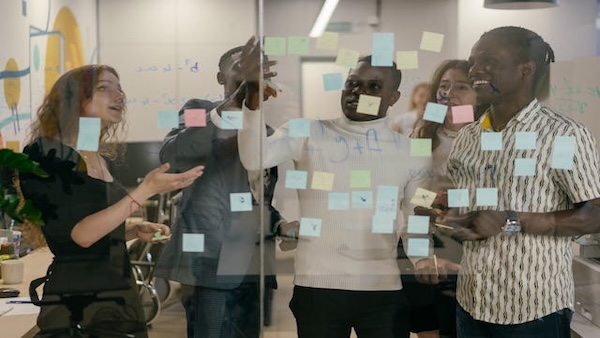Assessment tasks in hiring: fair test or free labour?
Assessment tasks such as take-home challenges, case studies, and mini-projects are now a standard in hiring.
Manage your equity and shareholders
Share schemes & options
Equity management
Migrate to Vestd
Company valuations
Fundraising
Launch funds, evalute deals & invest
Special Purpose Vehicles (SPV)
Manage your portfolio
Model future scenarios
Powerful tools and five-star support
Employee share schemes
Predictable pricing and no hidden charges
For startups
For scaleups & SMEs
For larger companies
Ideas, insight and tools to help you grow

With common Silicon Valley mantras like ‘fail fast’ and TED Talks on the value of mistakes, you might think the modern workplace had learned to embrace failure.
However, most companies still reward only the wins and treat losses like an awkward family secret.
That’s a missed opportunity, as celebrating failure can encourage experimentation and innovation, and help teams learn faster and avoid repeat mistakes.
If you want to build a culture where people take smart risks without fear, you need to celebrate failure effectively.
Here’s how…
Many leaders know they should promote risk-taking, but when a project fails, their instinct is still to hide it or downplay it.
Even worse is to attempt to spin failure into an upbeat announcement.
Employees then learn the lesson that companies are merely paying lip service to ideas about celebrating failure.
When failure is handled this way:
As Harvard Business Review notes, “Most leaders who say they want to encourage intelligent risk-taking fail to align their behaviour with that aim”.
Without genuine recognition and transparent learning, celebrating failure becomes just another empty corporate slogan.
True celebration of failure isn’t about applauding bad outcomes, it’s about recognising the effort, creativity, and learning that went into the attempt.
When leaders frame setbacks as stepping stones, provided they were well-reasoned and thoughtfully executed, they:
“I have not failed. I've just found 10,000 ways that won't work.” - Thomas Edison
The shift you want is from a culture that punishes failure, to one that rewards smart, well-calculated attempts, even if they don’t always succeed.
This is essentially the philosophy behind growth marketing, or growth hacking. In order to learn and move forward, it's important to experiment and learn from failures.

Celebrate the process, not just the outcome.
Here’s how to make it genuine.
Host regular learning reviews where teams share projects that didn’t pan out and the key takeaways. Keep the focus on facts, not blame.
For example, Etsy’s engineering team introduced public blameless post-mortems after outages.
The goal was to uncover what happened and how to prevent it, not to find out who messed up.
Over time, this reduced fear of reporting issues and improved incident response.
If you hand out awards for top sales, also recognise the team that tried a bold marketing idea that didn’t convert but generated valuable customer insights.
Intuit’s co-founder Scott Cook created a ‘Best Failure’ award and even threw failure-themed parties, reinforcing that experimentation backed by thought is valuable, even if it comes without a win.
Not all failure is worth celebrating. Make it clear you’re rewarding calculated risks backed by data or reasoning rather than poor planning or negligence.
Supercell, the gaming company behind Clash of Clans, empowers small autonomous teams to kill their own projects if they’re not working.
The focus is on sharing the learnings internally, not pushing bad ideas forward out of pride.
Telling people to take risks is one thing, but showing them you mean it is another. Symbols and rituals can help.
One example of this comes from IKEA. CEO Jesper Brodin introduced ‘banana cards’, a symbolic gesture where he signs off in advance for employees to take risks and fail.
He personally follows up on these projects, reinforcing that leadership stands behind them.
The more openly you share, the less taboo failure becomes.
Mobile game company Scopely runs a weekly ‘Fail of the Week’ session where employees share their biggest misfires and what they learned.
It’s public, informal, and focused on insight.
Rituals, language, and leader behaviour must all align to make failure celebrations authentic.
When you celebrate failure authentically, you create an environment where:
In this situation, failure becomes a driver of learning and growth.
Failure celebration done right isn’t about sugar-coating losses, it's about creating a culture where effort, learning, and courage are valued as much as wins.
That doesn’t just make people feel safer, it makes your organisation smarter, faster, and more adaptable.
When your team feels safe enough to experiment, giving them a genuine stake in the company’s future can make that commitment even stronger.
Employee share schemes
align individual ambition with collective success, ensuring that the rewards of innovation are shared by everyone who took the risk to make it happen.

Assessment tasks such as take-home challenges, case studies, and mini-projects are now a standard in hiring.

Diversity and inclusion can’t be a box-ticking exercise.

Asynchronous work is supposed to help us move faster, work flexibly, and collaborate across time zones without burnout. But for many teams, it’s...